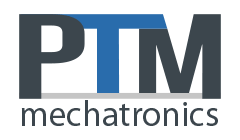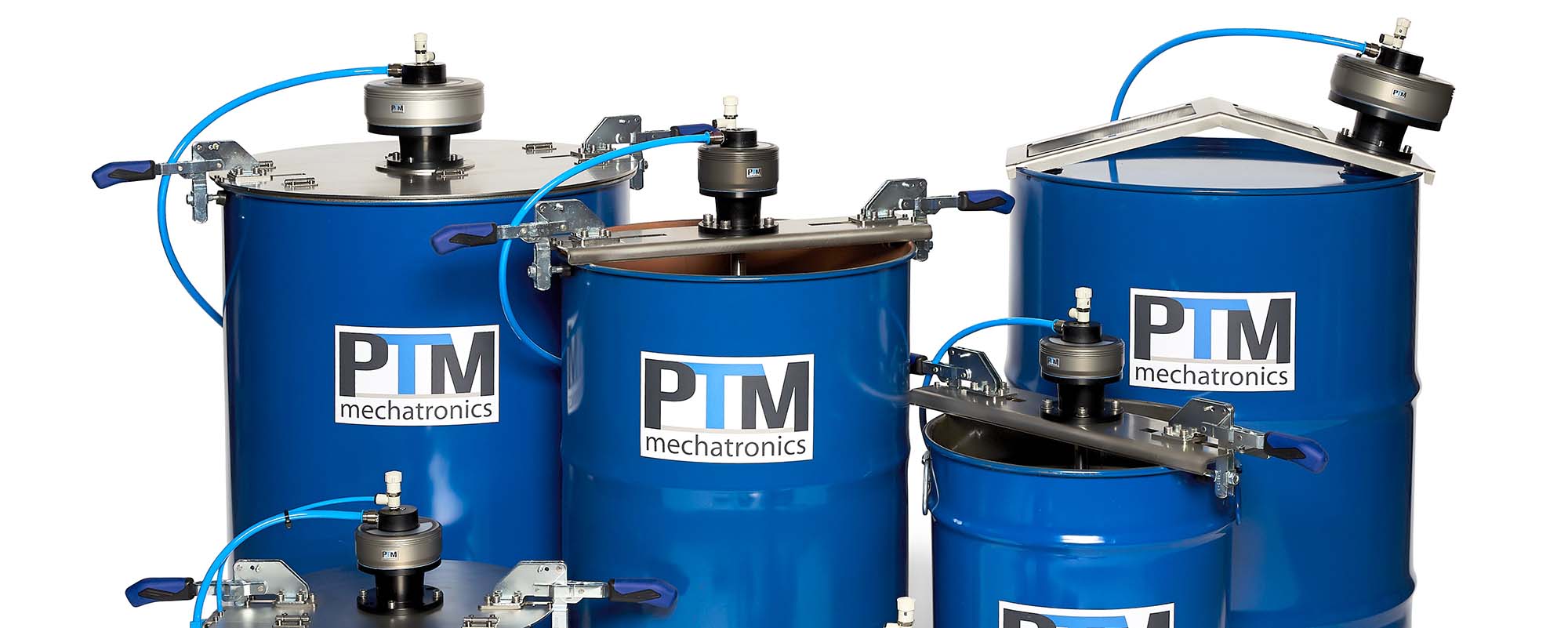
Basics for purchasing an agitator
Do you need an agitator? But you are not sure how to approach the task? Then you are exactly right here.
The selection of the suitable agitator can easily be determined using a few criteria. As soon as you have defined these criteria for yourself, the selection of the right agitator and the components is just diligence work. With this little information, we can offer you an agitator perfectly tailored to your agitating task within a very short time. And you can be sure that you will get a perfect mixing result. You will now find out what these points are:
1. What has to be stirred?
Important in advance: which substance has to be stirred. Are they solid substances such as powder or granules? Or liquids like water, oils, aromas? Or gases? Or do you have a mixture of two different substances, solids and liquids or liquids and gases? This mainly influences the selection of the impeller and the performance of the agitator drive. And brings us to the next section:
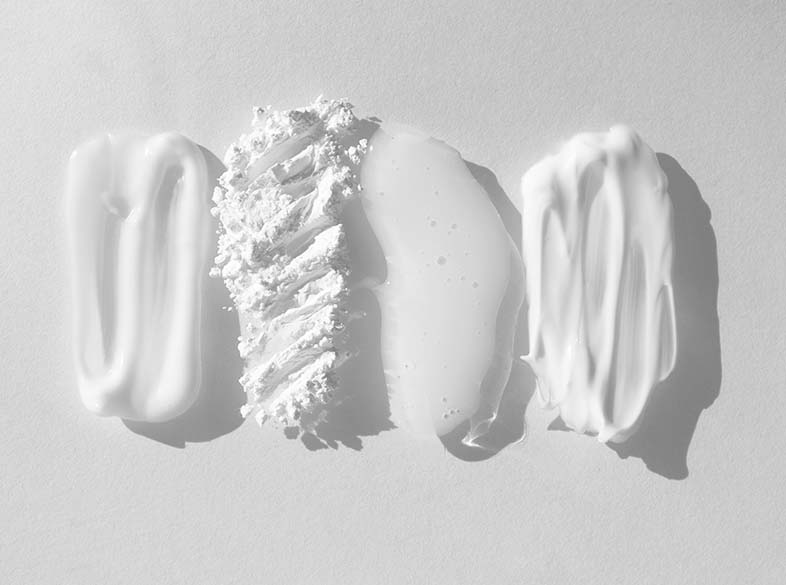
2. What is the viscosity and density of the material to be stirred?
In connection with point 1, you can now determine the viscosity of the substance to be stirred. If the viscosity is high, the substance is consequently rather tough, like honey. If it is low, the substance is consequently more liquid, like water (for a more detailed explanation, read our article on viscosity in our PTM Wiki.). The viscosity has a strong influence on the performance of the agitator drive to be selected. Higher viscosity needs higher torque.
The same applies to the density. Media with different densities can also be present in a stirring substance. For example, when granules or powder have to be added to liquids. Substances with a higher density, i.e. the granulate or powder, sink to the bottom. The mixing process, i.e. the distribution of solids in liquids, is called suspending. Solids can also have different densities. The mixing process is called solids mixing. Pay attention to the right impeller for such processes. Impellers with high shear forces, such as the dissolver disk, are perfectly suited to crushing solids and distributing them in a liquid. Helical ribbon impellers ensure an optimal mixture of solids.
Points 1 and 2 together give you information about which mixing task applies to you. Details can be found under point 3:
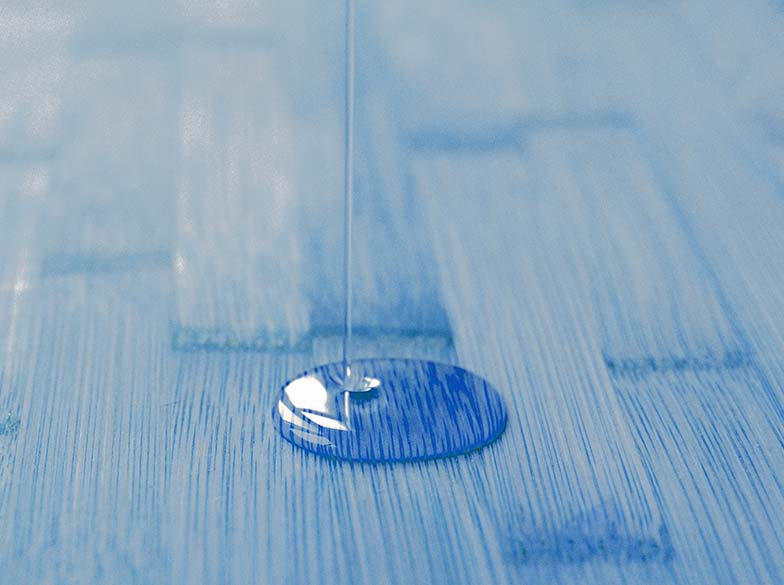
3. What is the mixing task?
Your previous considerations show what the actual task of the stirring process is. Do you need high shear forces and strong air intake in order to achieve effective mixing? Or should the stirring process be gentle? Does air intake have to be avoided at all costs?
In stirring technology, various tasks are defined that an agitator can perform. These are:
Liquid-liquid dispersing, gas-liquid dispersing, suspending, homogenising, mixing of solids or heat transfer. Read our knowledge articles in our PTM Wiki, in which we present these processes to you in detail.
Each of these processes has its own requirements for the flow behavior in the container (laminar or turbulent), flow profiles of the impellers (axially conveying, radially conveying or tangentially conveying) and necessary installations, such as heating or cooling coils or baffles.
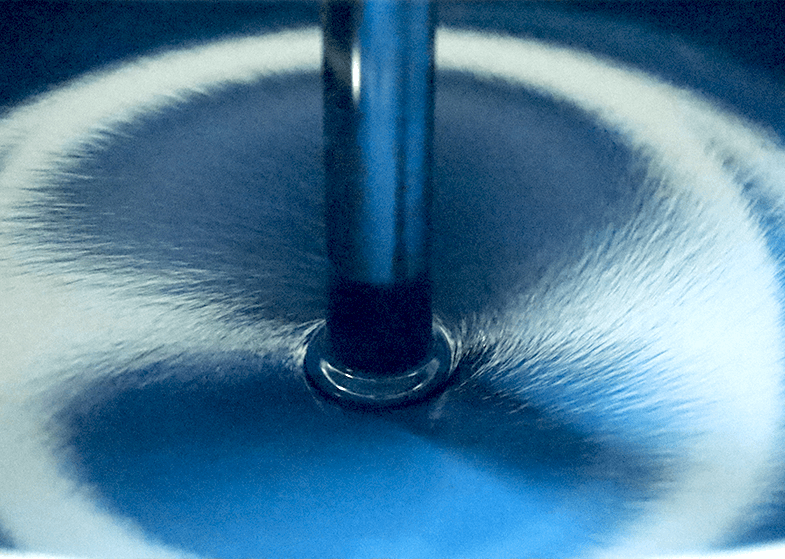
4. What amount has to be stirred?
The amount of stirring substance not only has a significant influence on the dimensions of the agitator, i.e. the size of the agitator shaft, the impeller or the stand. The power of the motor must also be adapted to the quantity. Logically, you need more power, i.e. torque, the larger the quantities you have to stir.
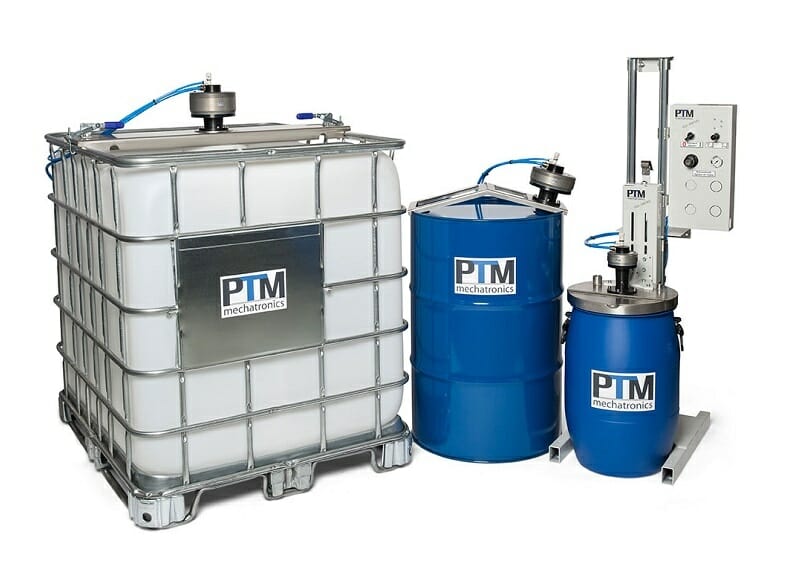
5. Which containers are used?
In stirring technology standardized containers are often used. Small to medium-sized agitators are mostly used for hobbocks (approx. 30l), drums (between 100 and 500l) or large IBC containers (approx. 600 to 1,200 liters). Of course, there are also large systems with thousands of liters, such as waste water treatment. The size of the container primarily defines the size, shape and number of the impellers and the length of the agitator shaft.
The type of container also determines the mounting of the agitator on the container. Do you need a traverse or a lid? Or do you use a convenient tripod agitator right away?
Of course, there are also special containers that do not comply with the standard, such as chemical process containers. These containers have specific openings for additional uses. Often special, industry-typical flange solutions are used, such as DN flanges, TriClamp or milk pipe fittings.
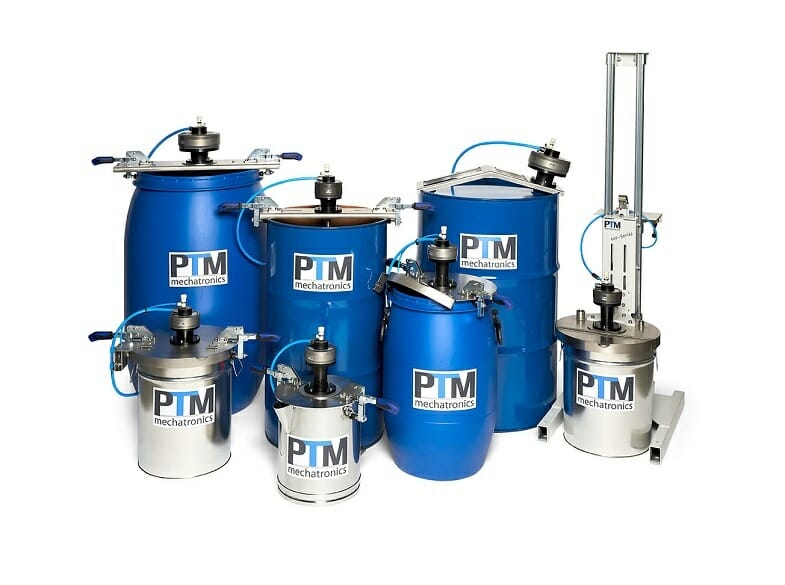
6. Is there a special environment or are there special requirements?
The process, the mix or the environment can mean that the stirring process is subject to special requirements. For example, explosive gases can develop when stirring, as is often the case in the chemical industry. Then your stirring systems require ATEX certificates. Some processes are hygienically critical, for example in the food, cosmetics or pharmaceutical industries and require the sterile environment of a clean room and the sterilizability of the components. The guidelines for pharmaceutical and food conformity must be observed. Protection class IP68 also plays a role in applications in damp environments or those that have to be cleaned frequently with wet cleaning.
This in turn influences the material and properties of the agitators themselves, as well as the components that come into contact with the media, such as the agitator shaft, impeller and container. ATEX-certified agitators are used for special explosion protection requirements, agitators made of robust stainless steel are used for hygienic applications. In some cases, additional structures are required to create the special environment, such as extraction units.
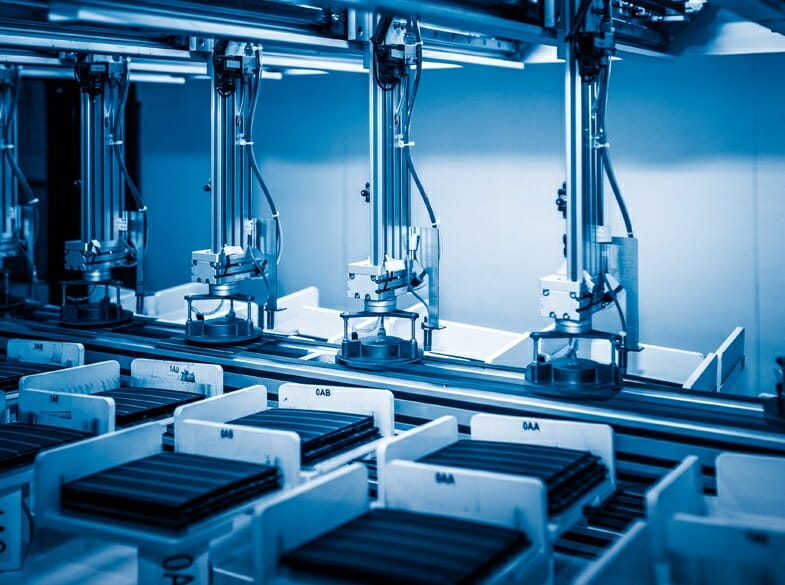
7. Upstream and downstream components
Stirring applications are supplemented by upstream and downstream components, for example to add substances or remove the mix. These include dosing devices, measuring sensors, filling systems, scales, collecting grids, etc. You can find detailed information on this on our plant construction site.
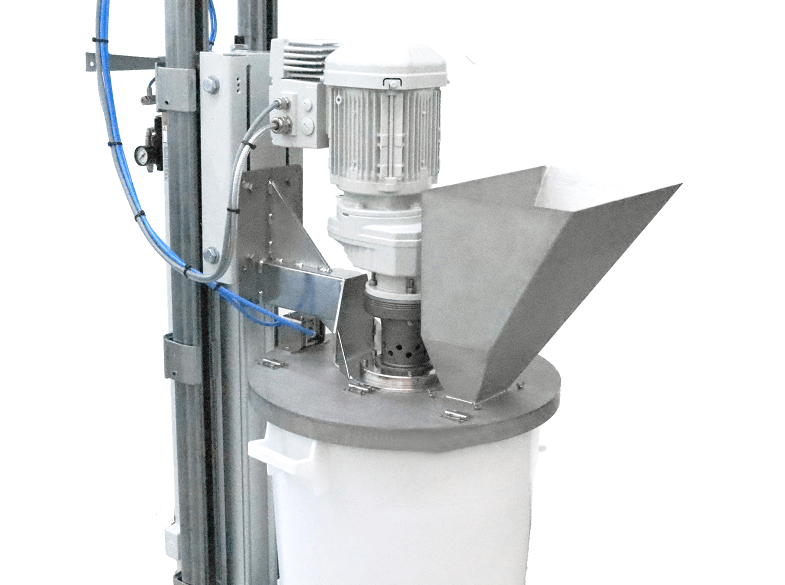
Of course, we would also be happy to go through these criteria with you personally. It is important that you get your perfect mixing result in the end.
Please contact us:
If you would like to be advised on our products, our experts will gladly take care of your request:
